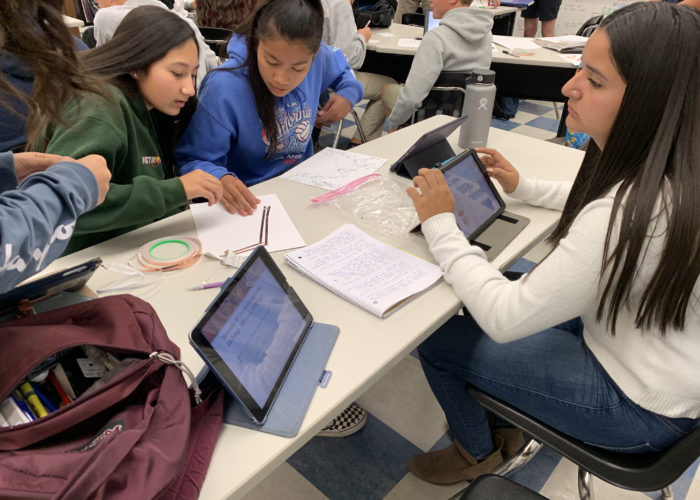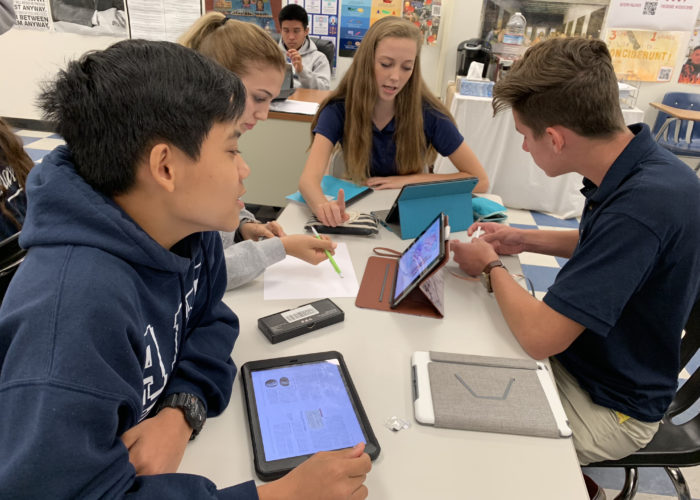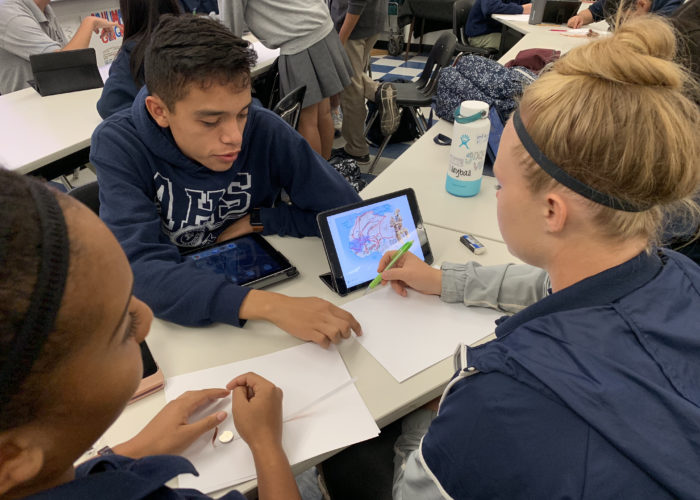INQUIRY BASED LEARNING AND THE HIGH SCHOOL HISTORY CLASSROOM
The now iconic scene of the monotone economics teacher played by Ben Stein in Farris Bueller’s Day Off hilariously encapsulated the collective experience High Schoolers endured in a Social Science classroom—perhaps any class. The premise of the film strikes a chord with many students: school is boring, and we’d rather feign sickness than attend. As any teacher can attest, we are no strangers to the blank stares and mindless expressions of students—especially High Schoolers. By way of reference (or for a laugh), check out the economics lecture from this famous film.
The scene is funny because it rightly reflects the traditional student experience in High School—especially in the social sciences. Boring lectures, seemingly irrelevant facts, and forward-facing information download only to be regurgitated on a test at a later date. But what if the History classroom could be exciting? What would it take for students to wake up excited to come to class that day and disappointed when the bell rings, and students need to leave World History for one of their other courses? A fundamental shift in the way learning occurs in the classroom is required.
Warren Berger explores a pedagogical shift through igniting student curiosity by inspiring inquiry in his book A More Beautiful Question: The Power of Inquiry to Spark Breakthrough Ideas. In his chapter Why We Stop Questioning, Berger argues that “our current system of education does not encourage, teach, or in some cases even tolerate questioning…” (2016, p. 46). And since questions are stifled, students become passive consumers of information pre-determined by the teacher and spoon-fed through lectures and handouts that reinforce rote memorization of facts. However, our current technological shift and the rise of Google and the looming A.I. will make this sort of rote-memorization education obsolete.
A quiet but powerful education revolution is growing, centered around Project-Based and Inquiry-Based learning. Deborah Meier, a designer of Inquiry learning at Central Park East Schools, advocated for just such a shift back in the 70s. She wanted to shape students into “critical thinkers and problem solvers” (Berger, p.51). And while critics may see a chaotic and undisciplined environment, a learning experience centered around students and their inquiry looked more like excited engagement rather than a library or graveyard of inquiry like the traditional classroom (Berger, p.53).
Berger, reflecting on Meier’s classroom environment, argued that she sought to “extend the kindergarten experience throughout all grades” (2016, p.52). In those formative years, students are given far more freedom to experience and learn, asking questions and not being confined to strict pacing and testing. Indeed, Berger also lauds the Montessori Schools that emphasized student-directed learning, projects of passion, and guided inquiry (2016, p.54). As a whole, these learning environments encourage inquiry and creativity, two invaluable skills that will shape the future work environment.
As a new teacher having been produced by these same traditional pedagogies, I quickly slipped into teaching much like Buller’s infamous economics teacher. In reality, I was far more animated and spend hours creating elaborate Keynotes. In my first two years, I lectured almost every day in that World History class full of Sophomores. Over and over, I saw either blank stares or otherwise interested students that did not know how to engage in the art of inquiry and think like a Historian. It was then that I realized something needed to change. It has been a long road, with much trial and error. What I know is that I, like Meier, want to create a learning experience for my students filled with passion, inquiry, and an environment filled with productive and exciting collaboration and creation.
Indeed, this last week I designed a multi-day project/inquiry-based learning activity in which students researched, designed, and created interactive trade maps. Teams of students chose a region of the world they believed most important for trade. They investigated what ports existed and what routes were traveled. They artistically created and designed the map itself and designed LED lights and copper tape to illuminate essential ports.
I would have never imagined teaching in this manner years ago, but the excitement and creativity of students has been electric.
However, I have not arrived yet. When I read about “extending Kindergarten into all grades” and Montessori schools, I wonder what recreating that learning environment in my classroom would look like. What would it look like to create a Montessori High School or a truly Project-Based and Inquiry-based learning environment?
I’m excited to find out.
Berger, W. (2016). A more beautiful question: the power of inquiry to spark breakthrough ideas. New York: Bloomsbury.
Pmw8000. (2011, Dec 29th). ‘Anyone, anyone’ teacher from Ferris Bueller’s Day Off. Retrieved from https://www.youtube.com/watch?v=uhiCFdWeQfA




